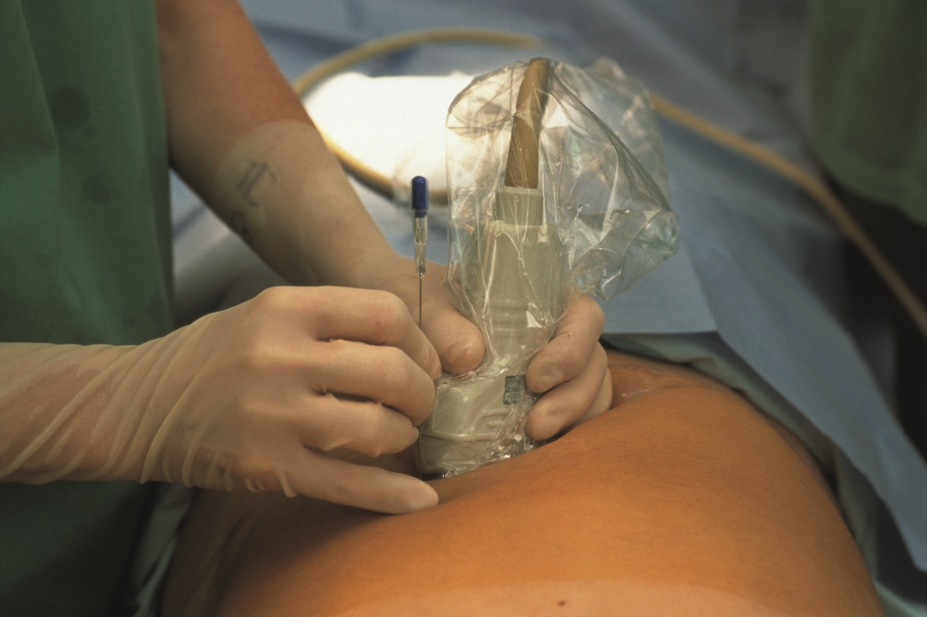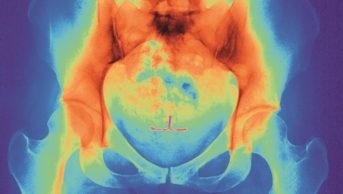
BSIP, Astier / Science Photo Library
There is overwhelming evidence that preconception interventions reduce the risks of adverse pregnancy outcomes, such as birth defects, foetal loss, low birthweight, preterm delivery, and maternal morbidity and mortality[1]
.
Pharmacists and healthcare professionals have an important role in providing preconception care and advice by screening for risks, recommending interventions to address identified risks, for promoting health and providing education. Although preconception care aims to improve maternal and child health, it provides additional health benefits to adolescents, women and men, irrespective of their plans to become parents. It also has a positive financial impact on the nation’s healthcare services[2]
.
Appropriate and comprehensive preconception care can be achieved by identifying couples who are at risk of having a baby with a genetic or chromosomal malformation and empowering the couple by providing them with sufficient knowledge to make informed decisions. This second article on preconception care will cover this in more detail (see previous learning article for details on dietary and lifestyle advice).
Screening and vaccination
Cervical screening is a method of preventing cancer by detecting and treating abnormalities of the cervix. The NHS cervical screening programme is available to women aged between 25 and 64 in England, and women aged 25 to 49 are invited for a cervical smear every three years[3]
. Women who are planning pregnancy and are due for a cervical smear test should be advised to arrange an appointment as soon as possible before getting pregnant.
All girls aged 12 to 13 are now offered the human papilloma virus (HPV) vaccination, Gardasil[4]
, as part of the NHS childhood vaccination programme[5]
because HPV is the main cause of cervical cancer in women[6]
. However, many women who are currently planning pregnancy may have been too old to be part of the vaccination programme when it was first implemented.
In addition, pharmacists and healthcare professionals should check that women of reproductive age have the required level of immunity against rubella, varicella and hepatitis B, and they should advise patients to be vaccinated if they are non-immune. In the absence of pregnancy, rubella and varicella usually manifest clinically as mild, self-limited infections. However, if contracted by the mother during the antenatal period, they result in devastating complications in the developing foetus. These infections have been directly responsible for miscarriage and for severe congenital malformations (e.g. deafness, eye abnormalities and congenital heart disease)[7]
.
Pre-existing medical conditions
Endocrine disorders
Thyroid dysfunction has been associated with pregnancy complications, including hypertension, preterm birth, low birth weight and placental abruption[8]
. Inadequately treated hypothyroidism in mothers can cause foetal death, low intelligence quotient (IQ) and psychomotor deficits in infants[9]
. Women with thyroid disorders should be advised by pharmacists and healthcare professionals to consult their GP before planning pregnancy to optimise control, receive counselling about the importance of medication compliance and to adjust the dosage of medication as required during pregnancy.
Thyroid stimulating hormone (TSH) concentration should be maintained between 0.4 and 2.0mU/L[10]
. Female patients who are hyperthyroid should be offered definitive therapy (e.g. surgery or radioiodine) before planning pregnancy[8]
. However, if radioiodine is used for treatment, women cannot plan a pregnancy for six months following it. For the medical management of hyperthyroidism, the safest option is often to use propylthiouracil in early pregnancy, changing to carbimazole in the latter months of pregnancy.
Thyroid disorders also affect the reproductive health of males. Hypothyroidism causes more subtle and reversible effects on male reproduction than hyperthyroidism. It can impair sperm motility and morphology, and can also cause altered sexual behaviour, but treatment with levothyroxine results in a significant improvement[11]
. In hyperthyroid men there is a significant decrease in semen volume, sperm count, sperm motility and number of morphologically normal sperm. The use of radioiodine therapy for hyperthyroidism or thyroid cancer may cause transient reductions in sperm count and motility, but there appears to be little risk of permanent effects, provided that the cumulative dose is less than 14MBq[12]
.
Diabetes
An association between elevated maternal glucose or glycosylated haemoglobin levels during embryogenesis and high rates of spontaneous abortions and major malformations in newborns (e.g. spina bifida, heart defects and gastro-intestinal defects) has been demonstrated[13]
. Pharmacists and healthcare professionals should advise women with diabetes to use an effective contraception method of their choice, based on their preferences and risk factors, until good glycaemic control is achieved.
The National Institute for Health and Care Excellence (NICE), England’s health technology assessment body, recommends that women planning pregnancy should be offered monthly measurement of their HbA1c and that they should aim to keep the level below 6.5% without having any major hypoglycaemic episodes[14]
.
Patients should also be counselled about the risks of malformations associated with unplanned pregnancies and poor metabolic control. If HbA1c is above 10%, it is strongly advised to avoid becoming pregnant until good diabetes control is achieved and sustained[14]
. Women with Type 2 diabetes should be assessed pre-pregnancy for diabetic complications (e.g. retinopathy, nephropathy and neuropathy), and should also receive a medicines use review.
Neurological disorders
Epilepsy is one of most common neurological diseases in pregnancy and the risk of death is increased tenfold in pregnant women with epilepsy, compared with those without the condition[15]
. The risk of congenital malformations is low if the foetus is not exposed to anti-epileptic drugs in the periconception period[16]
. Women with epilepsy should be advised by pharmacists and healthcare professionals to take folic acid 5mg pre-conceptionally and until at least 12 weeks of pregnancy.
Furthermore, women should also be informed that the risk of congenital abnormalities in the foetus is determined by the type, number and dose of their drugs. The Royal College of Obstetricians and Gynaecologists recommends that the lowest effective dose of the most appropriate anti-epileptic drug should be used[17]
. Optimisation of the disease and seizure frequency is essential before considering pregnancy.
All women with mental health issues (e.g. bipolar disorder, schizophrenia or severe depression) who wish to conceive should be referred to a psychiatrist for assessment and a medicines review. Patients should be advised by pharmacists and healthcare professionals to continue using effective contraception and current medicines until they have been fully reviewed by a psychiatrist.
Cardiovascular disorders
Chronic hypertension is associated with an increased risk of pre-eclampsia, placental abruption, and increased neonatal morbidity and mortality[18]
. The blood pressure and current medicines of female patients should be reviewed before planning pregnancy, a service which is now offered in many community pharmacies. Anti-hypertensive medication (e.g. angiotensin-converting enzyme (ACE) inhibitors and angiotensin receptor blockers) should be avoided in pregnancy as they can cause renal failure in the foetus[19]
,[20]
.
Gastrointestinal disorders
Women with inflammatory bowel disease (IBD), which includes ulcerative colitis and Crohn’s disease, who wish to become pregnant should be advised by pharmacists and healthcare professionals to consult their gastroenterologist, to discuss the importance of conceiving during remission, the need for good disease control during pregnancy to reduce the risk of adverse pregnancy outcomes, and the safety of medicines used during pregnancy and breastfeeding.
Mycophenolate and methotrexate, commonly used drugs for these conditions, should be stopped and replaced by suitable alternatives at least three months before attempts to conceive[21]
. Pregnancy outcome is similar to any other low-risk women, if disease is in quiescent stage, while those with active disease at conception have higher rates of miscarriage, preterm birth and low birthweight[21]
. The risk of preterm delivery is further increased by disease flares during pregnancy. Most women with previous bowel surgery tolerate pregnancy well[21]
.
Renal disorders
Women with chronic renal disease who wish to become pregnant should be referred to a specialist for assessment, and should continue using effective contraception and any current medicines until they have been fully assessed. Renal disease during pregnancy is associated with risk of premature birth, intrauterine growth retardation, pre-eclampsia and accelerated deterioration in maternal renal function[22]
.
Women with progressive renal diseases should be encouraged by pharmacists and healthcare professionals to complete childbearing while renal function is preserved. Women who have had a renal transplant should be advised to wait 18–24 months after the transplant and only attempt pregnancy if creatinine is stable at or below 200mmol/L[23]
. The patient should be advised to consult their specialist, who may also need to change their immunosuppressant medication.
Tacrolimus and mycophenolate, which are commonly used drugs in renal transplant patients, are contraindicated in pregnancy, so women taking these might need to be switched to safer alternatives pre-pregnancy[23]
.
Immunological disorders
All women with rheumatoid arthritis who are planning to become pregnant should be referred to a rheumatologist, especially if they are taking nonsteroidal anti-inflammatory drugs (NSAIDs) or disease-modifying anti-rheumatic drugs (DMARDs). Many DMARDs have teratogenic effects, so women taking these must be advised to continue using effective contraception until receiving a medicine review.
Pre-pregnancy counselling should be offered to all women with antiphospholipid antibody syndrome (APLA) (see[24]
for more information on APLA) and systemic lupus erythromatosis (SLE) (see[25]
,[26]
for more details on SLE). This should include a review of their clinical and medical history, disease activity, assessment of organ system involvement and antibody testing. At times, deferring pregnancy may be recommended to improve general health and reduce risk, such as the need for weight loss, following an acute thrombotic event or treatment of active SLE[27]
,[28]
.
Haematological disorders
Sickle cell disease (SCD) is associated with an increased incidence of perinatal mortality, premature labour, foetal growth restriction and acute painful crises during pregnancy[29]
. Women with SCD should be seen preconceptionally by a specialist and this consultation should include counselling, optimisation of management and screening for end organ damage. Women should be advised to take 5mg of folic acid once daily, both before and throughout pregnancy[29]
. Partner testing should be recommended in women with genetic haemoglobinopathies pre-pregnancy, to assess the risk of genetic transmission.
Women with thalassaemia should be referred by pharmacists and healthcare professionals to a haematologist for specialist assessment and monitoring. These women should be advised to take 5mg folic acid daily throughout pregnancy. Pregnancy is rare in women with beta-thalassaemia major owing to premature ovarian failure and is likely to have serious complications[30]
. These women require referral to a reproductive endocrinology specialist if they wish to become pregnant.
Viral infections
All women with HIV should be advised by pharmacists and healthcare professionals about safe sex practices and the use of condoms to prevent transmission of HIV. General pre-pregnancy counselling should be offered to these women, as well as referral to a HIV specialist. Patients should also be advised to wait until the viral load is undetectable and to make sure any infection is treated before trying to conceive, as well as the risk of HIV transmission to the baby and potential strategies to prevent this. Women with HIV infection are recommended to have yearly cervical smears. This is because women with HIV are more likely to be infected with HPV and more likely to have more cervical abnormalities, especially if they have a low CD4 cell count[31]
.
Sero-discordant couples (where only one of the partners is HIV positive) would benefit from referral to assisted conception services (intrauterine insemination or in vitro fertilisation) for help with conception, particularly to avoid physical cross-transmission of virus during sexual intercourse.
Women infected with hepatitis B and/or C should be under the care of a hepatologist for disease control, their disease should be stable and liver function optimised before considering pregnancy. In the pre-pregnancy period, they should be screened for long-term complications (e.g. chronic hepatitis, liver cirrhosis and hepatocellular carcinoma). Furthermore, they should also be counselled preconceptionally about the risk of transmission to the baby and the strategies to prevent it[32]
.
Cancer survivors
With the advances in diagnosis and treatment, many women are reaching reproductive age post-cancer treatment. Female survivors of childhood cancer, particularly those who were treated with radiotherapy, are at increased risk of subfertility, secondary premature menopause, delivering preterm, a two-fold increased risk of low birth weight, as well as a small increased risk of miscarriage[33]
.
Women planning a pregnancy after treatment for breast cancer should be advised by healthcare professionals to consult their clinical oncologist, breast surgeon and obstetrician. Advice on postponement of pregnancy should be individualised, based on treatment needs and prognosis. Most women should wait at least two years after treatment before considering pregnancy, which is when the risk of cancer recurrence is highest[34]
.
Advice on chromosomal abnormality and genetic screening
Genetic screening and counselling with a medical geneticist should be offered to women with a family history or previous pregnancy that has been affected by an inherited genetic condition. Women >30 years old planning pregnancy should be counselled regarding the risk of chromosomal abnormalities (e.g. Down’s syndrome) that increase with maternal age. There is no preconceptual test that will predict the risk of their baby being affected, but an antenatal screening test can estimate this risk. Women who are at high risk of haemoglobinopathies also need to be identified pre-pregnancy and should be asked about their family history.
Useful resources:
- Royal College of Obstetricians and Gynaecologists – Beta thalassaemia and pregnancy
- National Institute for Health and Care Excellence (NICE). NICE Guideline NG3. Diabetes in pregnancy: management from preconception to the postnatal period
- NHS Choices. Screening for sickle cell and thalassaemia
- Royal College of Obstetricians and Gynaecologists – Epilepsy in pregnancy
Reading this article counts towards your CPD
You can use the following forms to record your learning and action points from this article from Pharmaceutical Journal Publications.
Your CPD module results are stored against your account here at The Pharmaceutical Journal. You must be registered and logged into the site to do this. To review your module results, go to the ‘My Account’ tab and then ‘My CPD’.
Any training, learning or development activities that you undertake for CPD can also be recorded as evidence as part of your RPS Faculty practice-based portfolio when preparing for Faculty membership. To start your RPS Faculty journey today, access the portfolio and tools at www.rpharms.com/Faculty
If your learning was planned in advance, please click:
If your learning was spontaneous, please click:
How to have effective consultations on contraception in pharmacy
What benefits do long-acting reversible contraceptives offer compared with other available methods?
Community pharmacists can use this summary of the available devices to address misconceptions & provide effective counselling.
Content supported by Bayer
References
[1] Centers for Disease Control and Prevention. CDC 24/7: Saving lives and protecting people. Available at: https://www.cdc.gov/preconception/hcp/index.html (accessed February 2017)
[2] Grosse SD, Sotnikov SV, Leatherman S et al. The business case for preconception care: methods and issues. Maternal and Child Health Journal 2006;10(Suppl. 1):93–99. doi: 10.1007/s10995-006-0101-3
[3] Public Health England. NHS cervical screening programme: overview. 2015. Available at: https://www.gov.uk/guidance/cervical-screening-programme-overview (accessed February 2017)
[4] Gardasil SPC. Electronic Medicines Compendium. Available at: https://www.medicines.org.uk/emc/medicine/19016 (accessed February 2017)
[5] NHS Choices. UK Childhood vaccines timeline. Available at: http://www.nhs.uk/Conditions/vaccinations/Pages/childhood-vaccination-schedule.aspx (accessed February 2017)
[6] World Health Organization. Human papillomavirus and cervical cancer factsheet. Available at: http://www.who.int/mediacentre/factsheets/fs380/en/ (accessed February 2017)
[7] Centres for Disease Control. Control and prevention of rubella: evaluation and management of suspected outbreaks, rubella in pregnant women, and surveillance for congenital rubella syndrome. MMWR Recommendations Rep 2013;50(RR12):1–23.
[8] Carney LA, Quinlan JD & West JM. Thyroid disease in pregnancy. Am Fam Physician. 2014; 89(4):273-278. Available at: http://www.aafp.org/afp/2014/0215/p273.html (accessed February 2017)
[9] Casey BM, Dashe JS, Wells CE et al. Subclinical hypothyroidism and pregnancy outcomes. Obstet Gynecol. 2005;105(2):239–245. PMID: 15684146
[10] British Thyroid Association. UK Guidelines for the Use of Thyroid Function Tests. July 2006. Available at: http://www.btf-thyroid.org/images/documents/tft_guideline_final_version_july_2006.pdf (accessed February 2017)
[11] Kumar A, Shekhar S & Dhole B. Thyroid and male reproduction. Indian Journal of Endocrinology and Metabolism 2014;18(1):23–31. doi: 10.4103/2230-8210.126523
[12] Krassa GE & Perros P. Thyroid disease and male reproductive function. Journal of Endocrinological Investigation 2003;26(4):372–380. doi: 10.1007/BF03345187
[13] Preconception Care of women with Diabetes. American Diabetes Association. Diabetes care 2003;26(suppl 1):s91-s93. doi: 10.2337/diacare.26.2007.S91
[14] National Institute for Health and Care Excellence (NICE). Guideline: Diabetes in pregnancy. Management of diabetes and its complications from preconception to the postnatal period. 2015. Available at: https://www.nice.org.uk/guidance/ng3/evidence/full-guideline-3784285 (accessed February 2017)
[15] Edey S, Moran N & Nashef L. SUDEP and epilepsy-related mortality in pregnancy. Epilepsia 2014;55:e72–74. doi: 10.1111/epi.12621
[16] Fairgrieve SD, Jackson M, Jonas P et al. Population based, prospective study of the care of women with epilepsy in pregnancy. BMJ 2007;321(7262):674–675. doi: 10.1136/bmj.321.7262.674
[17] Royal College of Obstetricians & Gynaecologists. Epilepsy in Pregnancy. Green-top Guidline No. 68. June 2016. Available at: https://www.rcog.org.uk/globalassets/documents/guidelines/green-top-guidelines/gtg68_epilepsy.pdf (accessed February 2017)
[18] Sibai BM, Lindheimer M, Hauth J et al. Risk factors for preeclampsia, abruption placentae, and adverse neonatal outcomes among women with chronic hypertension. New England Journal of Medicine 1998;339(10):667-671. doi: 10.1056/NEJM199809033391004
[19] Al-Maawali A, Walfisch A & Koren G. Taking angiotensin-converting enzyme inhibitors during pregnancy: is it safe? Can Fam Physician 2012;58(1):49-51. PMCID: PMC3264010
[20] Roger N, Popovic I, Madelenat P et al. Fetal toxicity of angiotensin-II-receptor inhibitors. Case report Gynecol Obstet Fertil. 2007;35(6):556-60. PMID: 17544313
[21] Kapoor D, Teahon K & Wallace SVF. Inflammatory bowel disease in pregnancy. The Obstetrician & Gynaecologist 2016;18:205–212. doi: 10.1111/tog.12271
[22] Jungers P & Chauveau D. Pregnancy in renal disease. Kidney International 1997;52(4):871-885. doi: 10.1038/ki.1997.408
[23] Oxford Textbook of Medicine (5 ed.). Edited by DA Warrell, TM Cox & JD Firth: Renal disease in pregnancy; Oxford University Press. 2103-2107: 2010.
[24] Chahal J, MacCallum P, Wright P et al. Antiphospholipid syndrome: pathophysiology, diagnosis and treatment. Clinical Pharmacist 2016;8(7):online. doi: 10.1211/CP.2016.20201318
[25] Brown N, Hughes S & Venning M. Systemic lupus erythematosus: clinical features and diagnosis. Clinical Pharmacist 2012;4:195. Available at: http://www.pharmaceutical-journal.com/learning/learning-article/systemic-lupus-erythematosus-clinical-features-and-diagnosis/11104147.article ( accessed February 2017)
[26] Hughes S, Brown N & Vincent M. Systemic lupus erythematosus: management. Clinical Pharmacist 2012;4:200. Available at: http://www.pharmaceutical-journal.com/learning/learning-article/systemic-lupus-erythematosus-management/11104149.article (accessed February 2017)
[27] Myers B & Pavord S. Diagnosis and management of antiphospholipid syndrome in pregnancy. The Obstetrician & Gynaecologist 2011;13(1):15–21. doi: 10.1576/toag.13.1.15.27636
[28] Cauldwell M & Nelson-Piercy C. Maternal and fetal complications of systemic lupus erythematosus. The Obstetrician & Gynaecologist 2012;14:167–174. doi: 10.1111/j.1744-4667.2012.00113.x
[29] Management of Sickle Cell Disease in Pregnancy: Royal College of Obstetricians and Gynaecologists: Green–top Guideline No. 61 July 2011. Available at: https://www.rcog.org.uk/globalassets/documents/guidelines/gtg_61.pdf (accessed February 2017)
[30] Letsky E, James DK, Steer PJ et al. (Eds.) Anaemia -High risk pregnancy: management options. 2nd edn. London: W.B. Saunders. Chapter 42. 738-747. 1999.
[31] Franceschi S & Jaffe H. Cervical Cancer Screening of Women Living with HIV Infection: A Must in the Era of Antiretroviral Therapy. Clin Infect Dis. 2007;45(4):510-513. doi: 10.1086/520022
[32] Hepatitis C Online. Counselling for Prevention of HCV Acquisition and Transmission. Available at: http://www.hepatitisc.uw.edu/go/screening-diagnosis/counseling-prevention/core-concept/all (accessed February 2017)
[33] Reulen R, Zeegers M, Wallace W et al. Pregnancy outcomes among adult survivors of childhood cancer in the British Childhood Cancer Survivor Study. Cancer Epidemiology, Biomarkers & Prevention 2009;18(8):2239–2247. doi: 10.1158/1055-9965.EPI-09-0287
[34] Petrek J & Seltzer V. Breast cancer in pregnant and postpartum women. Obstet Gynaecol Can 2003;25:944–950. PMID: 14608445


